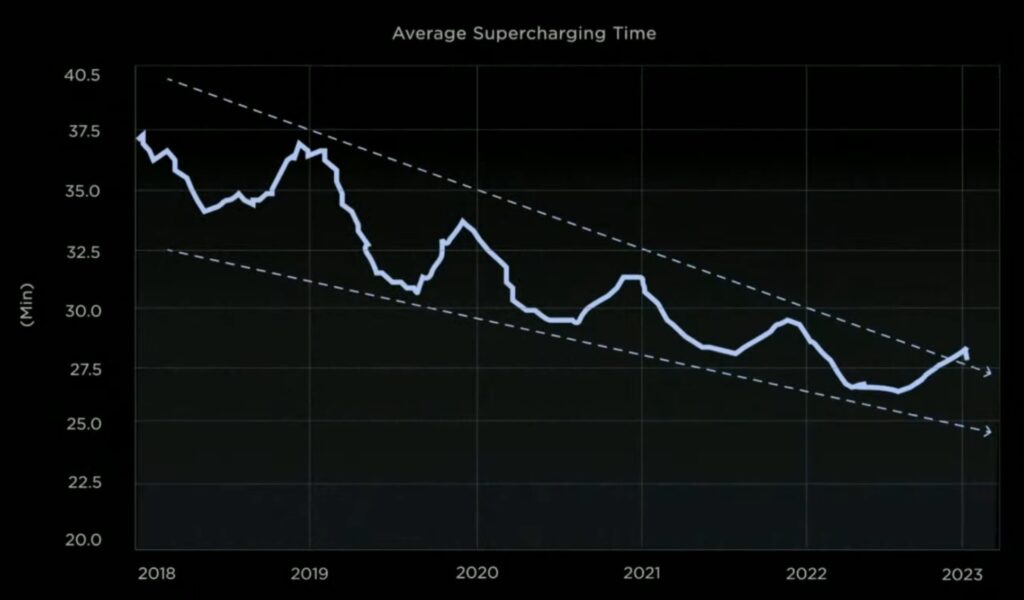Many of us wonder how long it takes to fast charge an electric car, compared to refueling an internal combustion engine car.
Surprisingly enough, it turns out that the average Tesla supercharging time is less than 30 minutes long (by the way, the network is in a pilot phase of opening to non-Tesla EVs).
The company’s official data indicates that in early 2023, the average time spent charging was slightly above 27.5 minutes per session, while in the middle of 2022 (during the summer period), it was probably closer to 26 minutes.
Let’s take a closer look at the chart below. It turns out that the average Supercharging time varies between summer and winter time, which most likely has something to do with battery temperature and acceptable charging power.
Tesla noted that the average charging time is currently about 30% shorter than before. The company was able to gradually reduce charging time at its stations thanks to various measures, such as:
- Transition to V3 Superchargers (increasing peak power to 250 kW)
- More efficient routing with trip planners
- Supercharger density increase
- Increased vehicle efficiency
- Battery pre-heating
- Greater customer education
This is a very interesting list, because it shows that the maximum charging power is not the only factor that matters. Other elements might make a significant difference when it comes to determining the average Tesla supercharging time.
For example, battery pre-heating allows drivers to arrive at a Supercharger with the battery already at an optimum temperature for fast charging, increasing average charging power and reducing waiting time.
But let’s also note elements that reduce the necessity to fast charge to a high state-of-charge (which in the case of Tesla cars is very important, because they charge slower initially). Those elements are vehicle efficiency (a higher driving range) or network expansions (the next charging stop is closer/in a more appropriate location). All those elements add up, and drivers do not have to charge as long as previously.
Another thing is education – a greater number of customers are aware that charging outside the home is more expensive than home charging, so there is no need to overcharge (like to 90% state-of-charge) beyond the level needed to reach their destination or next charging stop.
It will be very interesting to see whether, in the summer of 2023, the average Supercharging time will further reduce – perhaps under 25 minutes. The shorter that wait is, the more similar charging comes to refueling a gas vehicle. Most charging sessions are usually done at home (with a fair amount of charging at work); in those cases, it takes just a few seconds to plug in.
More details about the average Tesla supercharging time and other Tesla Supercharging stats are available in the following 2023 Tesla Investor Day video:









0 Comments